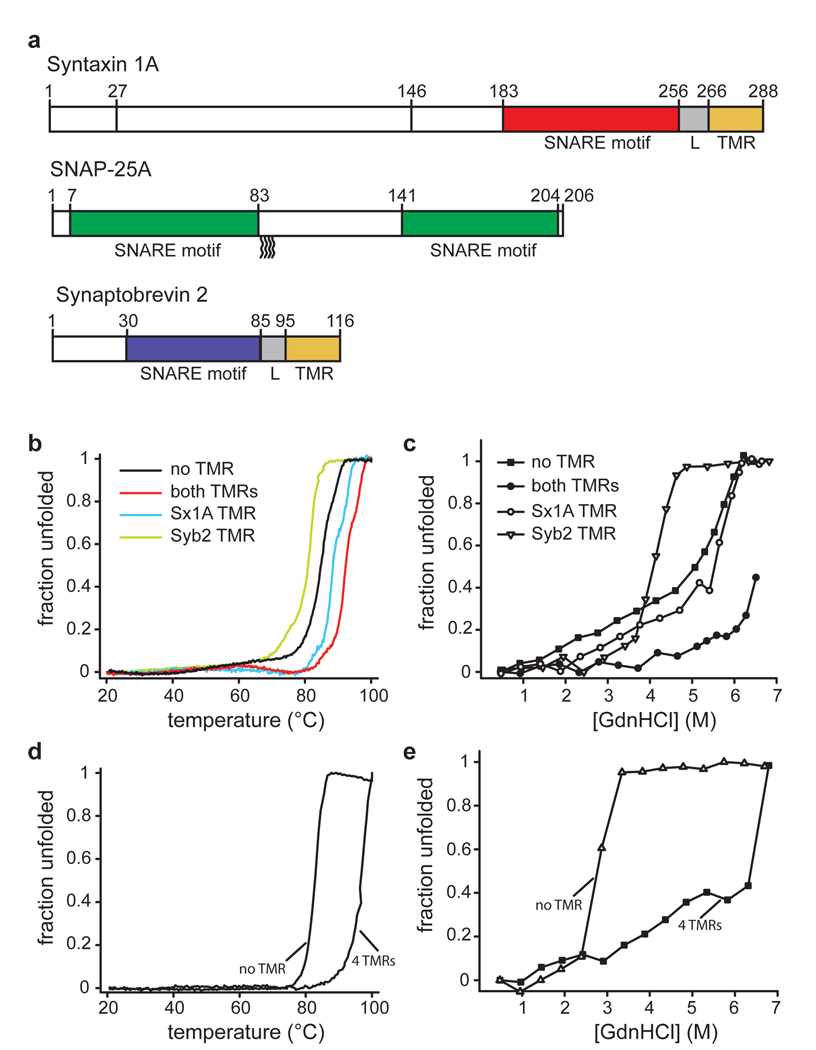Figure 1.
Linkers and transmembrane regions add stability to SNARE complexes.
a, Protein fragments used in this study. The complex used for crystallization contained all colored segments. For CD measurements, complexes were formed with the same syntaxin 1A fragment but with full-length synaptobrevin 2 and SNAP-25a (all cysteines replaced by serines).
b–e, Unfolding of SNARE complexes, monitored by CD spectroscopy at 222nm.
b, Thermal unfolding of synaptic SNARE complexes in which the TMRs were either present or in which one or both of the TMRs were lacking. Note that the complex used for crystallization unfolded at approximately 97 °C (see table 1). Sx1a, syntaxin 1A; Syb2, synaptobrevin 2.
c, Unfolding of the same complexes at increasing concentrations of guanidine hydrochloride (GdnHCl).
d, Thermal unfolding of endosomal SNARE complexes consisting of syntaxin 7, vti1b, syntaxin 8, and endobrevin, either containing or lacking its four TMRs.
e, Unfolding of the endosomal complexes at increasing concentrations of GdnHCl.

